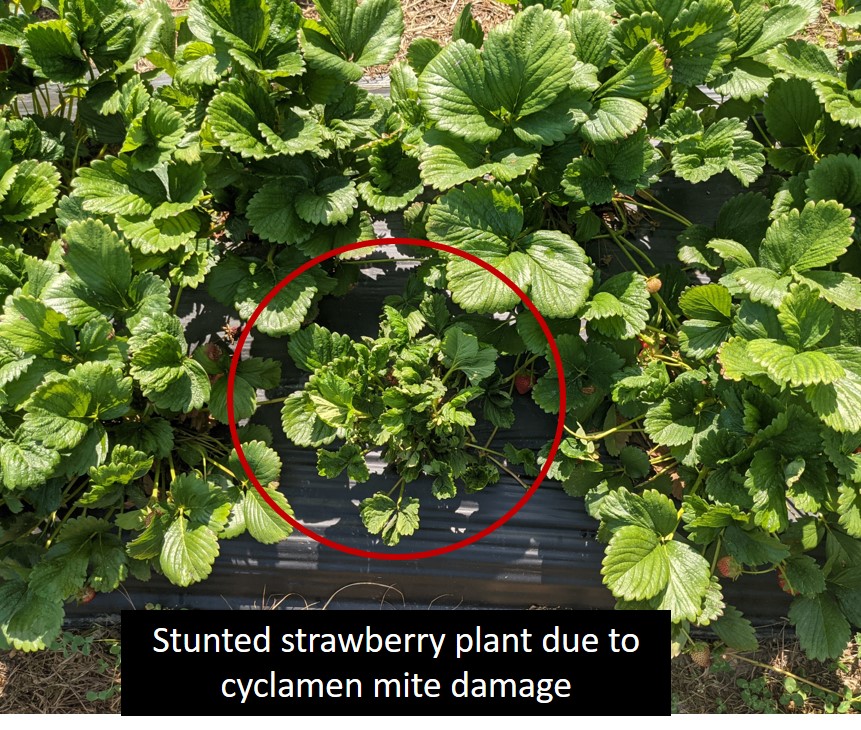Corn earworm (=bollworm) moth catches continued to increase this week in our black light traps. The average number of moths caught per night was: Greensville = 10; Prince George-Templeton = 26 (Scott Reiter reported this trap is next to some early April-planted corn that the shucks are starting to dry down on); Prince George-Disputanta = 6; Southampton = 10; Suffolk = 27. Here is the Table. We found bollworm eggs in cotton in Greensville and Suffolk this week. The 2021 season average in our adult cypermethrin vial tests is 25% survival (562 moths tested).
Category Archives: Pest Group
Corn earworm moth report for July 29, 2021
Black light trap captures of corn earworm moths (average number per night) in southeast Virginia this week were: Prince George-Templeton=0.7; Prince George-Disputanta=0.9; Southampton=2.0; Suffolk=4.0.
Our pyrethroid (cypermethrin @ 5 micrograms per vial rate) vial tests currently have 14% of corn earworm moths surviving the 24-hour exposure period (n=243 moths tested).
Pest Alert: Cyclamen mites in Chesapeake strawberries
In the past weeks, a few strawberry growers have expressed their concern about the possibility of cyclamen mite infestations. After visiting some strawberry farms in the Chesapeake area this week, I found symptoms of cyclamen mite damage in a few fields. Because of the small size of the mites, I took leaf samples from the symptomatic plants and confirmed the presence of the mites in the laboratory.
The cyclamen mite is a serious pest of strawberries. It has been reported in most strawberry-producing states. Cyclamen mites are tiny mites (0.001 in long) that feed on the tissue of nonexpanded and newly unfolded leaves in the strawberry plants. Adults and immatures of the cyclamen mite are considerably smaller than two-spotted spider mites and cannot be easily seen with the naked or a hand lens. Symptoms of cyclamen mite infestation include severely crumpled and crinkled leaves, as well as stunted plants.
The presence of cyclamen mites was confirmed mostly on ‘Ruby June’ strawberries, but they can infest any strawberry cultivar. Strawberry growers in the Virginia Beach metropolitan area and the eastern shore should beware of the presence of this pest mite in their field. There are very few miticides available for the control of cyclamen mites. Unfortunately, the same products used for the control of two-spotted spider mites do not always provide control for cyclamen mites. The best performing product against this pest is Portal (fenpyroximate). Agri-mek (abamectin), is also labeled for cyclamen mites. Despite being miticides, Acramite and Magister are not labeled for control of cyclamen mite and may not provide enough protection against it.


Dr. Lorena Lopez
Department of Entomology
Virginia Tech | Eastern Shore Agricultural Research and Extension Center (ESAREC)
(954) 529 9042 | lorelopezq257@vt.edu
Corn earworm report–September 24, 2020
Corn earworm moth black light trap catches were low this week, averaging from 2 to 6 per night (Greensville=3; Hanover=2; Southampton=6; Suffolk=2). Most trap operators will be shutting off their traps by the end of this month. We greatly appreciate the efforts of cooperating growers, Virginia Cooperative Extension Agents Mike Parrish, Sara Rutherford, Laura Maxey-Nay, Scott Reiter, and Josh Holland, and Tidewater Agricultural Research and Extension Center’s Daniel Espinosa. TABLE
Corn earworm report–September 17, 2020
With the exception of Hanover, trap captures have declined since last week. The average nightly corn earworm/bollworm moth black light trap captures for this week (rounded) were: Greensville=18; Hanover=7; Prince George-Templeton=3; Prince George-Disputanta=2; Southampton=8; Suffolk=38. Thanks to our trap operators for their reports! TABLE
Corn earworm report–Sep. 10, 2020
Average nightly corn earworm/bollworm moth black light trap captures for this week were: Greensville=28; Prince George-Templeton=5.5; Prince George-Disputanta=7; Southampton=17; Suffolk=76. Here is the Table
For soybean, here is the tool that calculates the corn earworm larval threshold number based on user input values for sampling techinque (sweep net or beat cloth), cost of insecticide application, price of beans, and row width: threshold calculator
We have done 391 vial tests so far this season, with 35% of moths surviving the 24-hour exposure to the pyrethroid cypermethrin at the rate of 5 micrograms per vial.
Corn earworm report–September 3, 2020
Average nightly corn earworm/bollworm moth black light trap captures for this week were: Dinwiddie=54; Greensville=15; Prince George-Templeton=13; Prince George-Disputanta=11; Southampton=22; Suffolk=92. Here is the Table
We have 37% survival in our cypermethrin vial tests (338 corn earworm moths tested from Suffolk, VA).
Corn earworm report–August 27, 2020
Corn earworm report–August 20, 2020
Average nightly corn earworm/bollworm moth black light trap captures for this week were: Dinwiddie=51; Greensville=9; Hanover=3 (first week with more than 0.5 per night); Prince George-Templeton=12; Prince George-Disputanta=3; Southampton=5; Suffolk=17. Here is the Table. At just over 200 vial tests conducted, corn earworm moth survival is 39%.
Corn earworm report–August 13, 2020
Average nightly corn earworm/bollworm moth black light trap captures for this week were: Dinwiddie = 26; Greensville =4; Prince George-Templeton = 9; Prince George-Disputanta = 6; Southampton = 8; Suffolk = 23. Thanks to our Agents and Growers for their efforts. Here is the data table
Sally Taylor and her entomology program sampled a Cotton Incorporated sponsored planting date experiment today at the Tidewater AREC in Suffolk, VA. We found 2 to 6.5% bollworm-injured bolls in conventional (non-genetically protected against bollworm) cotton. In our Virginia Soybean Board experiment with maturity groups 4 and 5 full-season soybean (beginning pod growth stage), we had 2.3 to 5 corn earworm larvae and up to 3 soybean looper larvae per 15 sweeps.
